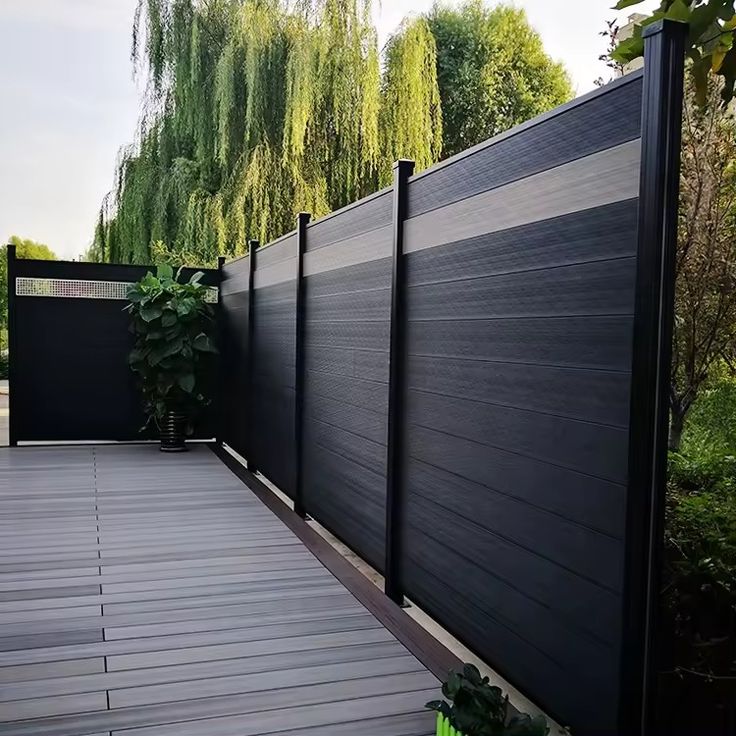In an era of increasing environmental awareness, homeowners in New Zealand are actively seeking sustainable choices for their building materials, including fencing. Wood-Plastic Composite (WPC) fencing has emerged as a frontrunner in this regard, offering a compelling blend of durability and aesthetic appeal alongside significant eco-friendly attributes. Far more than just a low-maintenance alternative, WPC materials contribute to a greener planet through their composition, manufacturing, and long-term performance.
This article delves into the specific eco-friendly features of WPC fence materials, highlighting why they are a responsible and sustainable choice for modern backyards.
1. Utilisation of Recycled Materials: Reducing Waste
One of the most prominent eco-friendly features of wpc fence is its primary composition from recycled content. This directly addresses the global challenge of waste management.
- Recycled Wood Fibres: WPC typically incorporates wood waste, such as sawdust, wood chips, and other timber industry by-products, which would otherwise end up in landfills. This reduces the demand for virgin timber and promotes a more efficient use of wood resources.
- Recycled Plastics: The plastic component of WPC often comes from post-consumer or post-industrial recycled plastics, such as high-density polyethylene (HDPE) from milk bottles, plastic bags, or other discarded plastic items. This diverts significant amounts of plastic waste from landfills and oceans.
- Waste Diversion: By transforming these waste materials into a durable, long-lasting product, WPC fencing actively contributes to waste reduction and a more circular economy.
2. Reduced Demand for Virgin Resources: Protecting Forests
The reliance on recycled materials in WPC production directly lessens the need for newly harvested natural resources, particularly timber.
- Forest Conservation: By using wood fibres from waste streams, WPC fencing helps to alleviate pressure on forests, contributing to their conservation and promoting sustainable forestry practices. This is crucial for maintaining biodiversity and combating deforestation.
- Conservation of Non-Renewable Resources: The use of recycled plastics reduces the demand for new petroleum-based plastics, conserving finite fossil fuel resources.
3. Elimination of Harmful Chemical Treatments
Traditional timber fences often require chemical treatments (such as CCA, though less common now, and other preservatives) to protect them from rot, decay, and insect infestation. WPC’s inherent properties negate this necessity.
- No Toxic Preservatives: WPC is naturally resistant to moisture, rot, and pests due to its composite nature. This means WPC fences do not need to be treated with potentially harmful chemicals, making them safer for your garden, soil, groundwater, and family.
- Safer Environment: The absence of these chemicals contributes to a healthier outdoor environment, reducing the release of volatile organic compounds (VOCs) and other pollutants.
4. Long Lifespan and Low Maintenance: Resource Efficiency
The exceptional durability and low-maintenance nature of WPC fencing contribute significantly to its eco-friendliness over its entire lifecycle.
- Extended Product Life: WPC fences have a much longer lifespan (25-30+ years) compared to traditional timber fences (10-15 years). This extended durability reduces the frequency of replacement, thereby conserving resources and reducing waste associated with manufacturing new products.
- Reduced Maintenance Inputs: The lack of need for regular painting, staining, or sealing means less consumption of paints, stains, and solvents, which often contain chemicals that can be harmful to the environment during production and disposal. It also saves water and energy that would be used for power washing or applying treatments.
5. Recyclability at End-of-Life: Closing the Loop
While WPC is a relatively new material, its potential for recyclability at the end of its long life cycle is another key eco-friendly feature.
- Potential for Reprocessing: Many WPC materials can be re-ground and re-processed into new WPC products, further closing the loop on material consumption and reducing landfill waste. As recycling infrastructure continues to develop, this aspect will become even more impactful.
By choosing WPC fence materials, homeowners are not only investing in a beautiful and durable addition to their property but also making a conscious decision to support sustainable practices, reduce waste, and contribute to a healthier environment for future generations.

